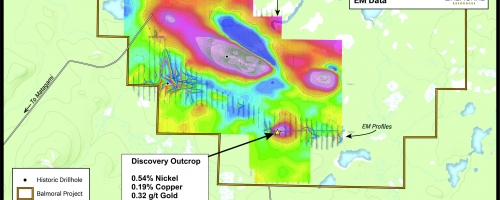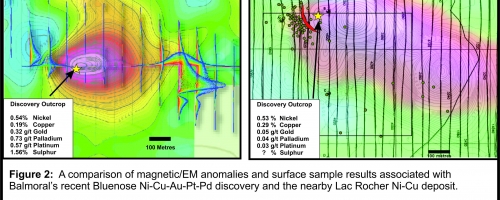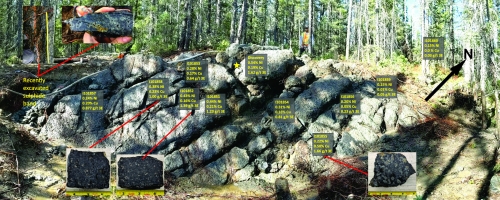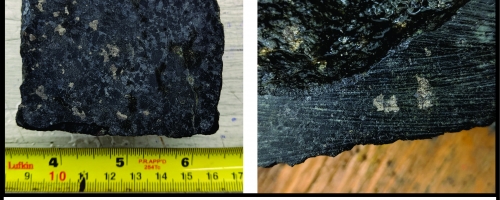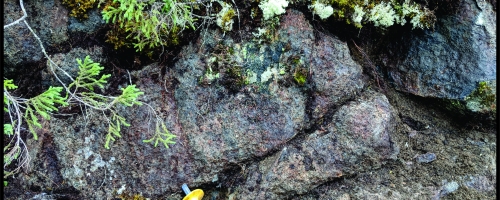Introduction
- Location: 150 km northeast of Matagami, Quebec MAP
- Access: Road accessible
- Target Commodities: nickel, copper cobalt, platinum, palladium
- Target: Mafic/Ultramafic hosted, magmatic nickel-copper-cobalt-PGE mineralization
- Stage of Exploration: Early stage, grassroots exploration
- Resources/Reserves: Currently no Resources or Reserves defined
- Ownership: 100% Balmoral
- Royalty Interest: None
The RUM Project encompasses six properties located in the Lac Rocher Nickel District of Central Quebec.(Click here for location map)
The properties – RUM North, Northwest, West, South, Southeast and Central – cover a series of untested airborne magnetic and electromagnetic anomalies interpreted to represent mafic to ultramafic intrusive members of the Lac Rocher Intrusive Suite which are prospective for nickel-copper-cobalt-PGE deposits.The RUM properties were acquired by staking by Balmoral between mid-2018 and mid-2019. Three of the properties – RUM South, Southeast and Central, were the focus of a detailed airborne magnetic and electromagnetic survey in late 2018. A portion of the RUM North Property was covered by a similar survey in 2011.
(Click here for maps of the RUM Property).
Follow-up mapping and prospecting in 2019 has verified that a number of the targeted geophysical anomalies are in fact ultramafic intrusions of the Lac Rocher suite and led to the discovery of the Bluenose nickel-copper-gold-platinum-palladium zone on the RUM North property. Bluenose is the first nickel discovery in the Lac Rocher district in two decades and supports Balmoral’s exploration model for the district.
Exploration Target
The exploration target for the RUM Project is mafic-ultramafic intrusive hosted high-grade nickel-copper-cobalt-PGE mineralization associated with pipe-like intrusive bodies in Archean terranes. The best known Canadian examples would include the high-grade, former producing deposits of the Lynn Lake camp of Manitoba, which were foundation assets for Sherritt International, and the Eagle's Nest deposit located in the "Ring of Fire" area of Ontario. These high-grade deposits are typically associated with relatively small intrusive bodies with distinct magmatic chemistry, and can reach over 20 million tonnes in size.


